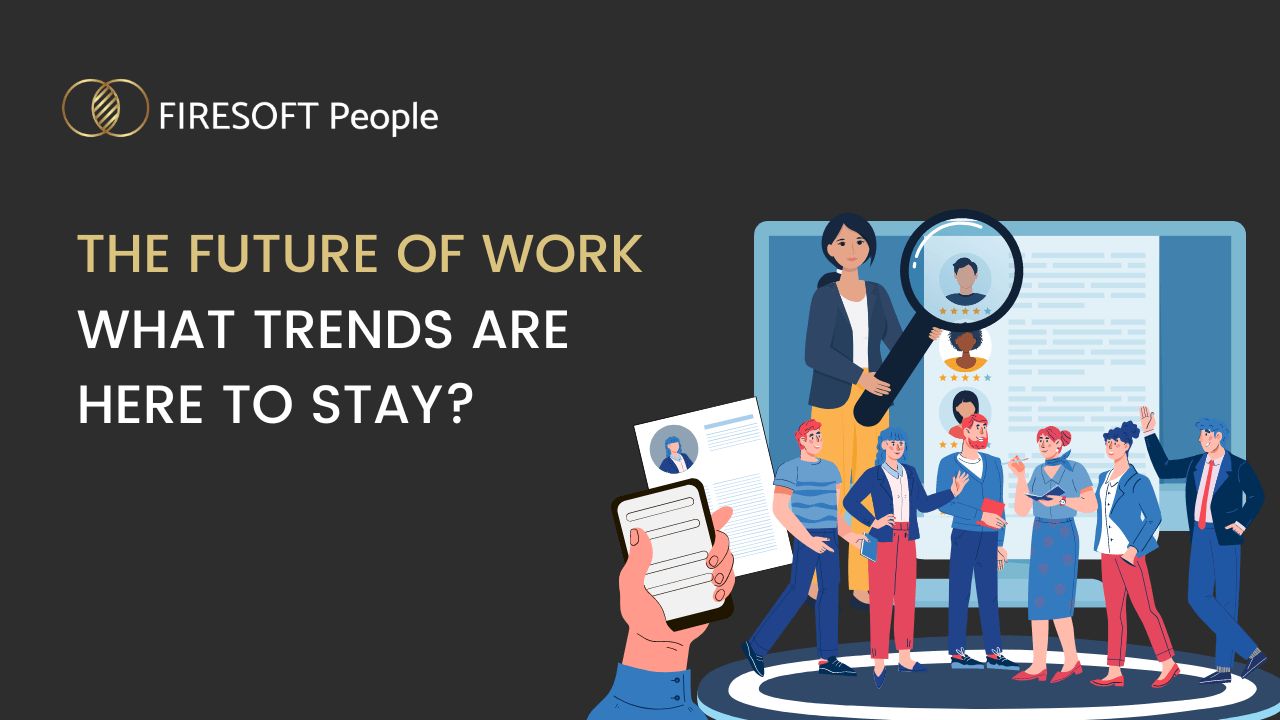The Future of Work: What Trends are Here to Stay?

For the past couple of years, organisations have been forced to adapt to drastic changes to keep businesses afloat and develop new tactics to hire and retain talents, focusing on the priorities of potential candidates and existing employees. The world of work continues to transform rapidly. Here are some workplace trends that we will see in the next year:
Flexibility
One of job seekers' top priorities is flexibility; hybrid and remote work arrangements are here to stay. Many organisations quickly adapted to this kind of arrangement and now recognise that it is a sustainable long-term option. Productivity increased when employees were given the option to work from home. It seems ironic that people are more focused at home than in an office setting but being at home lets workers feel more in control of their time and have fewer distractions.
Employee Wellbeing
Mental health has become a priority and is now more openly discussed in the workplace. Many people have prioritised work-life balance when job hunting. Modern workplaces now offer mental health consultations alongside their traditional health care benefits. Some have also included perks such as gym memberships or onsite fitness centres, or healthy snacks to prioritise health and wellness.
Remote Hiring
For the longest time, video calls were reserved only for those living in a different city or country, but Zoom and Google Meet interviews and meetings are here to stay. With remote hiring, some organisations have hired applicants from other cities and countries, which widened their talent pool.
Skills Versus Educational Background
Organisations have changed their job requirements to attract more applicants. Some have prioritised skills and experiences and are no longer looking into a candidate's educational background. This is particularly true in IT, as many tech jobs have dropped degrees in exchange for skills and work experiences. Candidates have acquired their skills through online courses and Youtube tutorials instead of in a traditional school setting.
Digital Skills
Organisations from different industries continue to incorporate technology into their systems, requiring employees to have soft skills and be tech-savvy. The digital transformation of companies is no longer just about sending emails but also incorporating different communication platforms, automations, artificial intelligence and chatbots to help them run their businesses smoothly and have a wider reach of applicants and clients.
The world of work continues to evolve. While organisations are still recovering from the effects of the Great Resignation and the Great Attrition, there's much hope as a new generation of the workforce comes in the next year. At FIRESOFT People, we continue to adapt to these changes. Want to know more about how we can help you power your projects? Get in touch with us through this link.
Other suggested reads for you


Looking for a new role? Register for Job Alerts Here!
FIRESOFT People was born out of the need to deliver a refreshing approach to recruitment and consulting services
Sign up to receive our newsletter
Contact Us
We will get back to you as soon as possible.
Please try again later.
Services
Resources
Contact Us
New Business and General Enquiries:
SYDNEY
MELBOURNE
In the spirit of reconciliation the Firesoft acknowledges the Traditional Custodians of country throughout Australia and their connections to land, sea and community. We pay our respect to their Elders past and present and extend that respect to all Aboriginal and Torres Strait Islander peoples today.
Privacy Policy | © FIRESOFT PEOPLE 2023 | Powered with 🤍 by Shazamme
